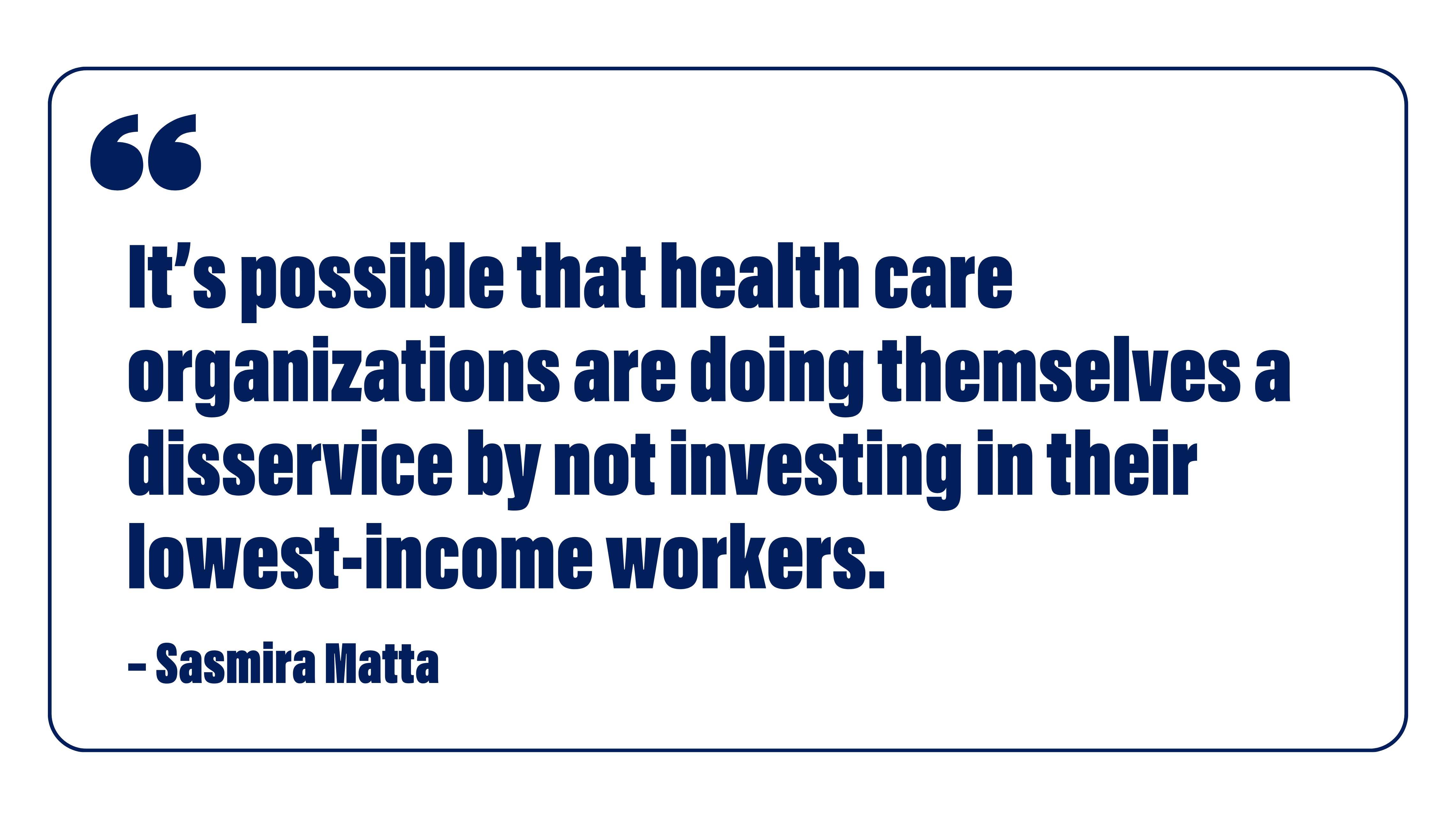The Scholar

Sasmira Matta
PhD Student, Health Care Management and Economics, The Wharton SchoolBio
Sasmira Matta, MS is a third-year PhD student in Health Care Management and Economics at the Wharton School. She examines topics related to governance, the use of feedback, worker well-being, and inequality, with all of her work focused on the health care sector.
Matta received her bachelor’s degree in Applied Mathematics and Public Health in 2017 and her Master’s in Health Economics and Research Outcomes in 2019 from Johns Hopkins University.
See more of her research here.
The expansion of Medicaid under the Affordable Care Act poured billions of dollars into U.S. health care systems, allowing them to raise compensation for health care workers. But the benefits were not equally shared.
New research from Wharton finds that incomes stayed flat for the lowest-paid workers – health aides, orderlies, and sanitation workers. Meanwhile, the highest-paid workers — doctors, nurses, and managers — earned about 2.2% more per year.
The study reveals how hospital systems may be exacerbating income inequality because the lowest-paid health care workers are more likely to be minority women with limited bargaining power and numerous barriers to advancement.
“We know these are workers who are already marginalized, so health care organizations are not helping. They are actually, and likely unknowingly, contributing to structural marginalization,” said Sasmira Matta, a Wharton doctoral candidate in health care management who co-authored the paper. “It may not be intentional, but this is definitely a spillover effect.”
Matta said the results of the study are also concerning because aides, orderlies, and sanitation workers are essential in providing overall patient care, and previous research has correlated compensation to patient safety and experience.
“Lower-wage health care workers are critical to good, quality health care. We know this from the pandemic,” she said. “We know that we need all of the team members on deck. They are just as important as higher-wage health care workers.” The paper, “Changes in Health Care Workers’ Economic Outcomes Following Medicaid Expansion,” was published in JAMA. The co-authors are Paula Chatterjee, professor of internal medicine at the Perelman School of Medicine, and Atheendar S. Venkataramani, internist and professor of medical ethics and health policy at Perelman.

The scholars compared economic outcomes for more than 1.3 million health care workers in 30 states that expanded Medicaid, compared with 16 states that did not. Using data from the 2010-2019 American Community Surveys, they looked at income levels and whether there was an uptake in employer-sponsored health insurance, Medicaid, and Supplemental Nutrition Assistance (SNAP) benefits for health care workers.
While the lowest-paid workers didn’t make more money, they were about 3% more likely to receive Medicaid benefits under the expansion. They also experienced significant decreases in employer-sponsored health insurance and increases in SNAP after the expansion.
“Medicaid expansion has made health care organizations like hospitals, clinics, or long-term care facilities richer. The big black box is we don’t really know what they do with their profits,” Matta said. “Management theory suggests that organizations that invest in their workers will reap benefits, so we were interested in testing whether these improvements were in fact shared with all the individuals that keep these organizations running.”
The scholars acknowledge that the data did not show the difference between low-wage health care workers who were hospital employees and those who were contracted. But the increase in Medicaid recipients and decrease in employee-sponsored health insurance among that group indicates that companies who contract don’t have an incentive to increase wages.
“In terms of thinking about why this matters, this tells us that Medicaid expansion may have been another way for health care organizations to increase their bottom line by relying on contracted workers or knowing they had an option to use contracted workers,” Matta said.
The scholars noted the limitations of their study, including that the aggregated data does not reveal changes in wages and benefits for individual workers or by individual employers. Still, they believe hospital systems should consider the study results when determining wages and benefits for their lowest-paid workers, who are an integral part of quality health care for patients.
“Prior to the COVID-19 pandemic, our health care workers were burned out. We know that was only exacerbated by the pandemic,” Matta said. “It’s possible that health care organizations are doing themselves a disservice by not investing in their lowest-income workers,” Matta said.
— Angie Basiouny


